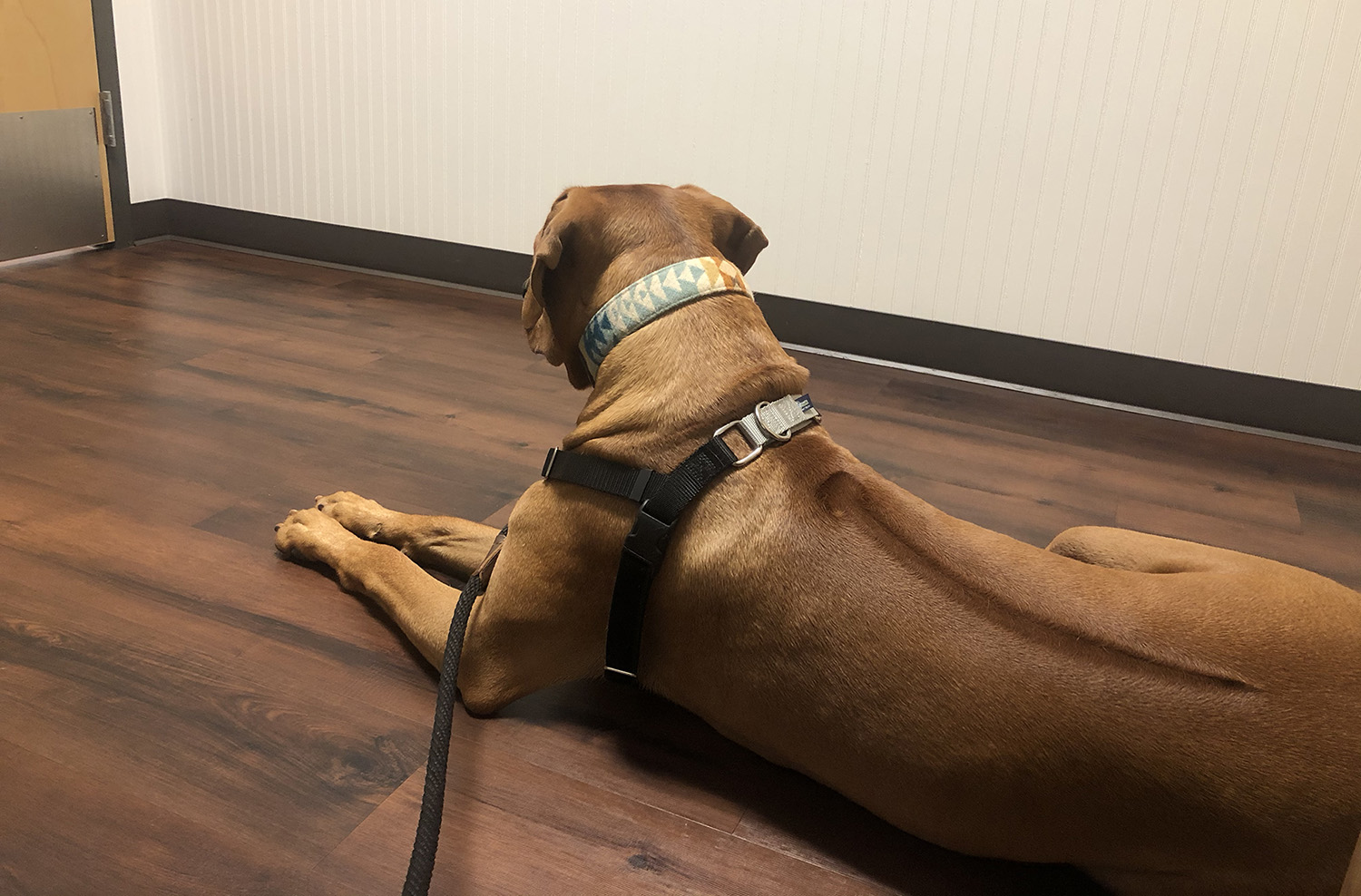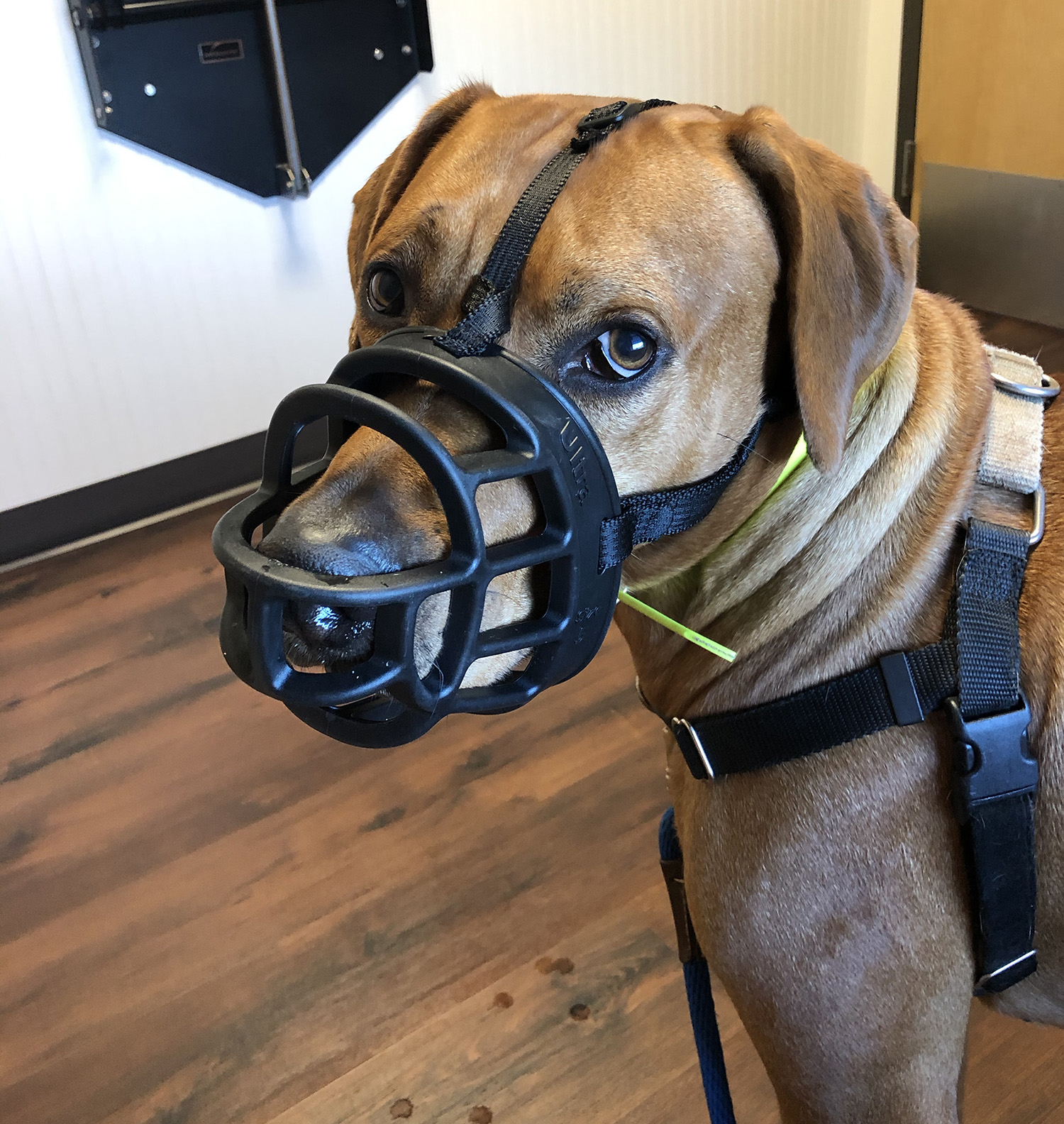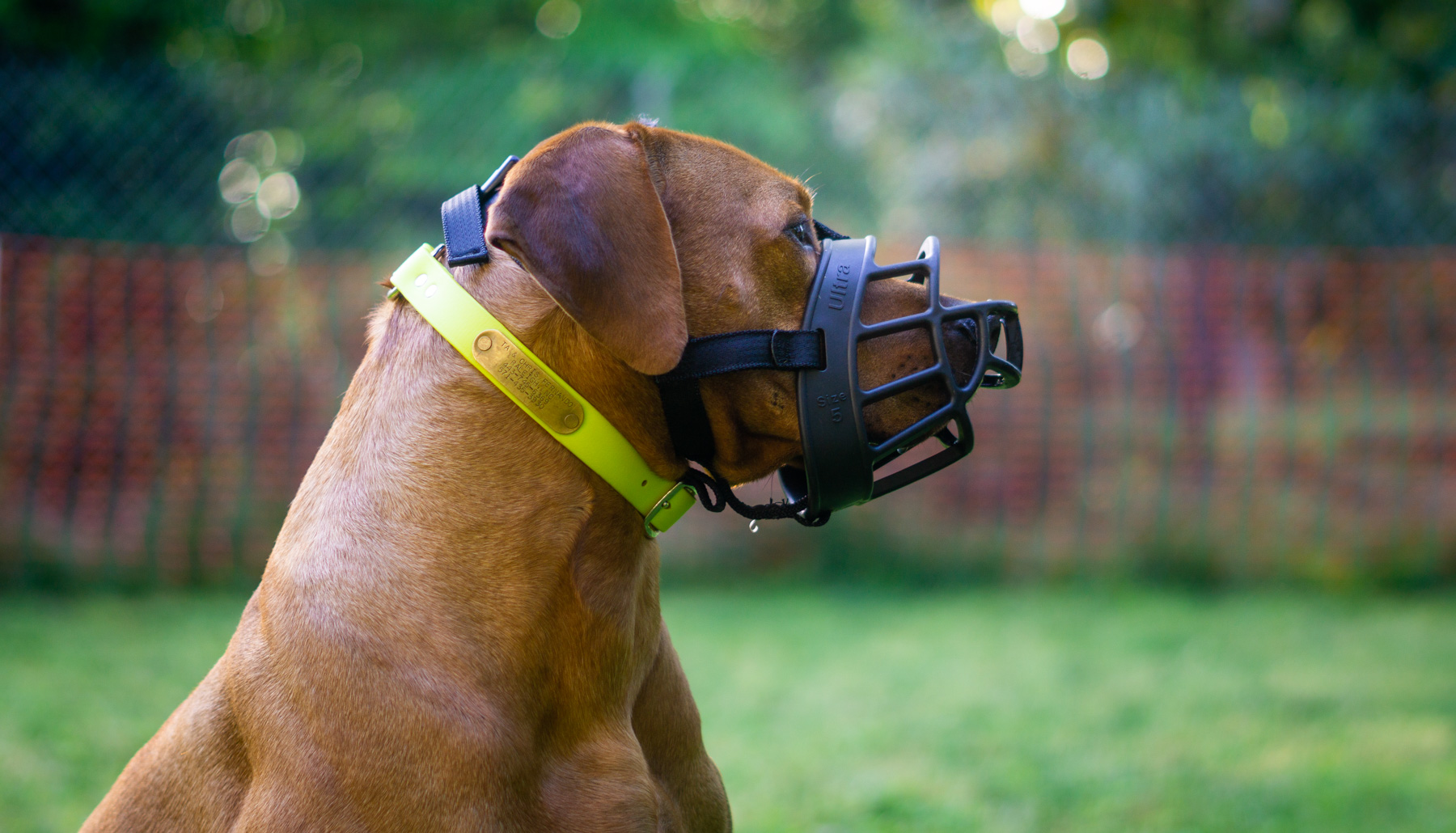This post contains affiliate links. I get commissions for purchases made through links in this post.
Does your dog like going to the vet? I’m willing to bet that a lot of dogs are at least somewhat wary of visiting the vet. Then there are those dogs who are downright scared of the vet. Who likes being poked and prodded? Many people don’t like going to the doctor for the same reason.
Fortunately, Zara does not mind going to the vet. In fact, when she was younger, I wrote a blog post about how she enjoyed going there to get attention. Zara has always been very happy go lucky and she is very tolerant of people touching her. While she sometimes looks uncomfortable if the vet is examining her ears or eyes, she tolerates it and recovers very quickly.
Colombo is the exact opposite. He has disliked the vet since he was a puppy and despite all the positive associations I’ve tried to build, his fear and anxiety have only gotten worse as he’s gotten older. He also weighs 100 pounds, which makes him harder to handle than a smaller dog like Zara. Obviously, he has to go to the vet sometimes, so I’ve figured out ways to make the experience manageable for both of us.
Start Young with Positive Experiences
First and foremost, if your dog is still a puppy, or you will be getting a puppy soon, make sure to do everything you can to help them have a positive experience while they’re still young. Since puppies normally need to go to the vet several times when they are young anyway, this is a great time to make it a good experience. Some puppies are naturally shy or afraid of new places and people, so take it slow. I would recommend visiting the vet as often as you can when your dog is young just for a “happy visit” – check their weight, walk around the waiting room, and bring treats with you for the staff to give them. Colombo was scared of the vet from day one, so I tried to do this. I probably could have done it more (maybe once a week?) and honestly I don’t think it had much effect. But it’s worth trying.
Consider Bringing Another Dog or Person
As I mentioned above, Zara does not mind the vet. In addition to bringing Colombo in to get weighed when he was younger, I also brought him every time Zara had an appointment. Nothing happened to him; he was just there to observe and get treats and positive attention. I still bring him with me most of the time for Zara’s appointments. You may also consider bringing your partner/spouse/trusted friend with you. If your dog is nervous, having two people he likes may make him a little calmer. This also allows for two trusted people to hold him for procedures while the vet does what needs to be done.
Go When They’re Tired/Hungry
A lot of experiences with dogs go over better when they are tired (eating at restaurants, visiting family) and the vet is no exception. If your dog has just been on a long walk or run, they may be more relaxed than if they just got up from a nap. A dog that hasn’t eaten recently is more likely to take treats from the veterinary staff and you may be able to coax them into cooperating more easily.
Use Appropriate Equipment or Medicine
Sometimes, despite all your best efforts, your dog may still be scared of the vet (this is the case for Colombo). Depending on your dog, you may need to use some equipment or medicine to enable the vet to get their work done. Since Colombo is such a large dog, I cannot easily hold or restrain him. Over time, I’ve learned that it’s easier for me to hold on to him if he wears a harness (I use a Freedom harness). This gives me a place to grip if he is trying to wriggle away.
By the time Colombo was about 18 months old, the vet suggested we muzzle him in order to administer vaccines or have blood drawn. He had not become aggressive, but given his size and overall demeanor, they thought it would be best. The vet practice had their own muzzles and you can imagine that Colombo was not thrilled about having this strange piece of equipment put on him. After this happened once or twice, I opted to buy my own muzzle and train him to accept it. We use a Baskerville muzzle. Muzzles get a bad rap, but they are tools that keep a dog and the people around them safe. If your dog needs a muzzle at the vet, don’t feel bad.
You may also need to give sedatives prior to visiting the vet. Trazadone is typically a medicine that is given to calm dogs down and make them sleepy. A sedated dog is more likely to be compliant. In Colombo’s case, it hasn’t made a huge difference but combined with the muzzle and harness, probably helps some. He is also very difficult to give pills to (he can spot a pill from a mile away) so I don’t always manage to give him the full dose.

Colombo relaxes while we wait for the vet to come back. I always put his Freedom harness on him when we go to the vet so that it’s easier for me to hold on to him.

Colombo wears his muzzle at the vet.
Know Your Dog and What Will Work
Over time, you will likely figure out what will work if your dog is scared of the vet. For Colombo, I know that his fear is mostly just anxiety/anticipation. I can assume this because he cries and freaks out when the vet tries to touch him, but as the actual needle is going on for a blood draw or vaccine, he doesn’t seem to care. Once it’s over, he recovers and is content to take treats from the vet. (He will not eat them before).
For him, I know that I have to be there for all procedures. They cannot take him into the back alone – he will sit down and refuse to move and even if they got him back there, he will yelp, growl, and not let them do anything. What works best is for me to securely hold on to him and firmly rub his head (he likes head massages) and talk to him constantly in a calming vet. Then the vet can touch him or access his back end for a blood draw or whatever. Of course, he is wearing the muzzle the whole time.
Find a Good/Understanding Vet
This is important. You want a vet who is willing to work with you and do what’s best for your dog to accomplish what needs to be done. Our vet is very understanding and knows that Colombo freaks out when new people walk into the exam room, so she will usually tell the vet technician to stay out if we need to perform a procedure on him. She takes things slow and allows me to be in the room for things that they would normally take a dog into the back for.
Advocate for Your Dog
It’s okay if your dog is scared of the vet. But they still have to go sometimes, so it’s up to you to make it the best experience possible. Using the advice I recommended above will go a long way to making it as quick and painless as possible. Recently, I had to have a few health tests done on Colombo (OFA eyes and heart, in case he is bred some day). These tests were held at a dog show and the vets were set up in a horse barn (it was an outdoor show). When I signed up, I saw on the sign-up form that the dogs would be taken from the owners and the tests would be performed on them without the owner being present. I knew that this wouldn’t fly with Colombo. I emailed the organizer and asked if I could be present. She checked with the vet and confirmed that yes, that was okay.
While Colombo was still a bit anxious during these exams, we got through them and were able to get the test results we needed. If I had not advocated for him, it would have likely made his anxiety/fear worse if they had tried to take him away from me.
Does your dog like the vet or is her or she scared? Tell me in the comments below!




